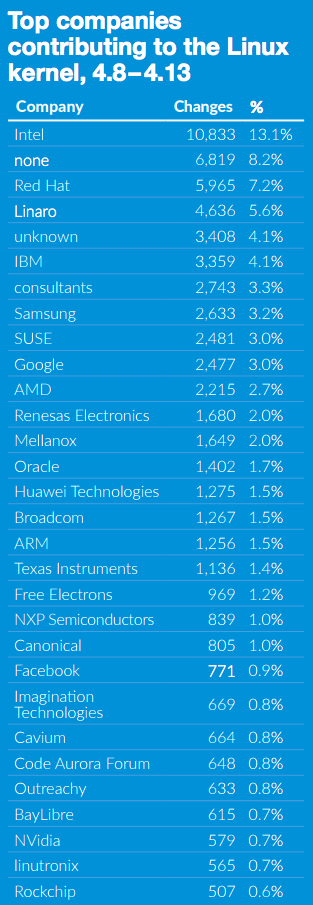

3,258 – The number of changes contributed by David S.20% – The share of the total changes contributed by the top 20 individual developers over the last 5.5 years.9% – The share of the total changes contributed by the top 10 individual developers over the last 5.5 years.

#Linux kernel development code#
In fact, when we divide the number of lines of code in each version of the Linux kernel with how many developers were involved, we find out that each developer, on average, accounts for 10,935 lines of code in each release. And there may be some truth to that but the fact is that the Linux kernel is a big community of diverse individuals. You would perhaps think that most of the work is carried out by lonely hackers slaving away at a piece of code in the solitude of a dark room. That’s assuming the kernel keeps the same average growth between versions going forward, as it has from 2.6.11 to 3.2.

4.3 – The number of patches to the kernel tree per hour between version 2.6.11 and 3.2.6.88 – The number of patches for kernel version 3.2, the highest of any release.1.95 – The number of changes per hour for kernel version 2.6.12, the lowest of any release.12,243 – The number of patches for kernel version 2.6.25, the largest of any release.3,616 – The number of patches for kernel version 2.6.11, the fewest of any release.61 – The number of days of development for kernel version 2.6.14, the shortest of any release.108 – The number of days of development for kernel versions 2.6.12 and 2.6.24, the longest of any release.8-12 – The desired release period (in weeks) for a major kernel release.1991 – The year Linus Torvalds jump-started the development of Linux as a whole.200 – These developers represent nearly 200 corporations.1,000 – Each release contains the work of at least this many developers.8,000-12,000 – The number of patches going into each recent kernel release.Note that version 2.6.36 is excluded from this chart, and the reason you can find below. On average, each version of the Linux kernel saw 3,509 lines of code being added per day of development.

In version 2.6.23, the developers added on average 715 lines of code per day, and in version 2.6.29 they added 9,166 lines of code per day. If we look at how many lines of code have been added for each version, and divide that with how many days each version took to finish, we get a wide spread.
#Linux kernel development software#
The Linux kernel is a rather expansive software project, with over 15 million lines of code as of version 3.2, more than double that of version 2.6.11: If not otherwise noted, the numbers below cover kernel versions 2.6.11 to 3.2. How fast is it going?įirst, let’s look at how fast the Linux kernel is developed, with numbers for how many patches each release has included, and much more. Read on to get a real up-close look at the Linux kernel. We jumped head first into the report and extracted as much information as we could. The report contains lots of amazing numbers, which together offer an insight into the tremendous amount of work that goes on behind the scenes to develop the kernel, the core of the Linux OS. In the report “Linux kernel development,” the Linux Foundation details the development of the Linux kernel by presenting fascinating statistics.


 0 kommentar(er)
0 kommentar(er)
